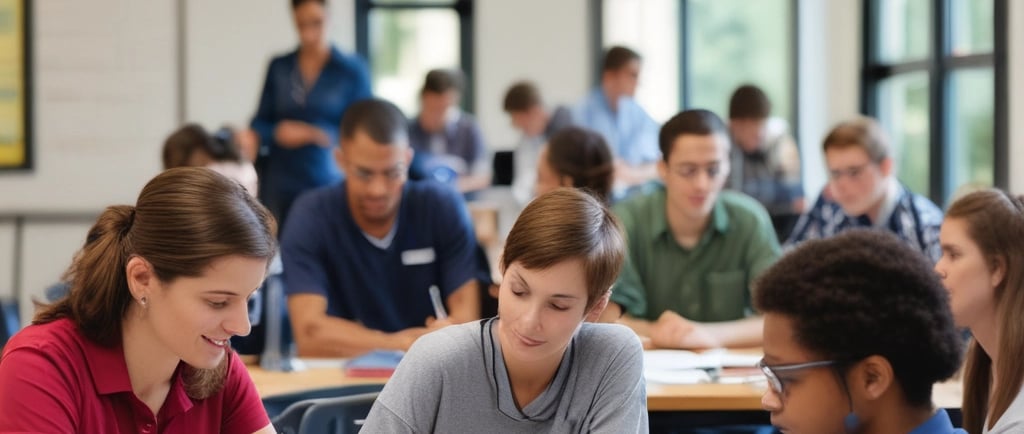Empowering the Future Workforce: Key Insights from Youth and Young Adult Workforce Development Programs
WORKFORCE DEVELOPMENT
11/8/20243 min read


For too long, the American education system has struggled to prepare all students for the demands of college, careers, and active civic life. This isn't just a matter of test scores; it's a systemic failure that perpetuates inequitable opportunities, particularly for Black, Latinx, and Indigenous students. As a new report from the Center for American Progress (CAP) highlights, these students face disproportionately higher rates of dropout, remediation, underemployment, and unemployment. And now, the COVID-19 pandemic is only widening these pre-existing cracks.
So, what are the barriers preventing these students from thriving in the workforce of the future? The CAP report pinpoints three critical gaps:
1. Lack of Early Career Exposure:
Imagine trying to navigate a complex city without a map. That's what it's like for many students trying to choose a career path without any exposure to different industries and occupations, especially in the crucial K-8 years. The report emphasizes that students’ life circumstances like income level, gender, and immigration status, often outweigh their academic performance in determining career aspirations. This limited exposure means students often enroll in high school courses that lead nowhere, leaving them unprepared for the post-secondary options they desire. Students perceptions about careers are often formed as young as 10 years old. Without early and robust career exposure, these perceptions remain unchanged and misinformed.
The Impact: Students' socioeconomic backgrounds exert more influence on their career choices than their academic abilities. They remain unaware of potential career paths that could align with their interests and skills.
2. Insufficient Holistic Preparation:
Today's workforce demands more than just academic knowledge. It requires a combination of academic mastery, technical skills (like computer literacy), and essential 21st-century skills such as critical thinking, collaboration, and problem-solving. While many states acknowledge these dimensions of readiness, few have established equitable systems for developing and measuring these skills across all students.
With rapid technological advancements and the shifting nature of work, students must develop skills that allow them to participate in this evolving workforce. Unfortunately, existing deficiencies in preparation will only serve to exacerbate opportunity gaps.
The Impact: Students are ill-equipped to adapt to the changing demands of the workforce, particularly in fields impacted by technology and automation.
3. Inadequate Accountability Systems:
Current school accountability systems are too narrowly focused on reading and writing test scores, incentivizing schools to prioritize test performance over the holistic development of students. What is needed is a more comprehensive approach to measure the students' development of academic knowledge, technical skills, and 21st-century skills that are needed for future good jobs.
Educators and employers need to identify the systemic changes required to develop seamless pathways from education to training, and ultimately, good jobs of the future. This also means implementing benchmarks, early career preparation, and holistic readiness, and historic opportunities for students.
The Impact: Schools prioritize test scores over a broader range of skills and experiences needed for future success, neglecting the importance of career preparation and civic engagement. The result? Students are ill-prepared for both the workforce and active participation in their communities.
The Path Forward:
The CAP report makes it clear that we need a systemic approach to address these challenges. This includes:
Early and ongoing career exploration opportunities, starting in elementary school.
A broader definition of college and career readiness that incorporates academic, technical, and socioemotional skills.
Accountability systems that measure student outcomes beyond test scores, including career readiness and civic engagement.
These solutions will require collaboration between schools, colleges, local employers, and community organizations. Most importantly, it demands a commitment to ensuring that all students, regardless of their background, have the opportunity to thrive in the workforce of the future. It's time to move beyond simply acknowledging these gaps and start building a more equitable and effective education system for all.
This blog post serves as a starting point for discussions with students, parents, and community members on how to shape the education system.
